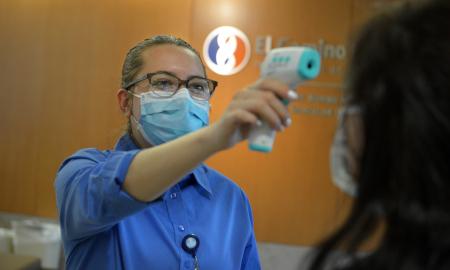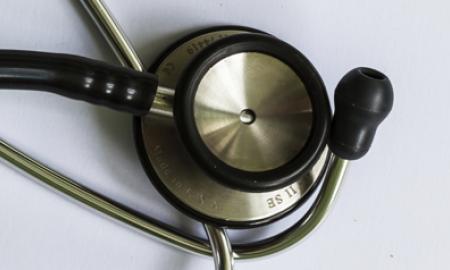2017 Research and EBP projects
RESEARCH Projects
Achieving Pain Management with Less Opioids
|
 Debbie Smyth, BSN, RN-ONC |
Study Aim: Is there a difference in average documented pain scores in the first 24 hours post-op and total morphine equivalents (MEs) usage for total joint replacement (TJR) patients with “oral pain medications and patient controlled analgesia (PCA)” versus “oral pain medications only.” Project Goal: The aim of this study was to provide a greater understanding of the effect of using PCA as a treatment for TJR patients. This study was approved by the IRB in March 2017 until March 2018. |
Problem Statement / Background: Patients having TJR surgery benefit greatly by having effective pain management routines that allow early mobility in the post-operative period. At the study site, two primary methods to reduce pain were used: “oral only” and “oral and PCA.” For patients with PCA, PCA was discontinued for most patients on Post-op Day 1 (POD1).
Methodology: This retrospective study involved data collected from the electronic health records of adult patients who had routine total joint replacement surgery from January 2017 through July 2017 (n=196).
Variables collected included:
- Patient’s age and gender
- Procedure (total hip versus total knee replacement)
- Surgeon
- PCA versus non-PCA
- Amount of medication administered by PCA
- Amount of PCA medication wasted
- Oral pain medication versus no oral pain medication administered
- Liposomal Bupivacaine administered
- Average pain levels in the first 24 hours post-op
All opioids administered were converted to morphine equivalents for purposes of comparison.
Results:
- Patients with “oral and PCA” (n=96) pain management used statistically significant more MEs (average = 255 mg) when compared to patients with “oral only” pain management (n=100, average 66.3 mg; p<0.001). Most patients with PCA had it discontinued on POD1.
- Patients with “oral and PCA” had statistically significant higher average levels of pain in the first 24 hours post-op (average = 3.8) using a numeric pain scale over patients not using PCA (average = 3.2); p<0.02.
- For PCA syringes discontinued on the day after surgery an average of 8.3 mg of hydromorphone was wasted from a 13 mg syringe.
Conclusions:
Findings suggest pain relief was improved and less morphine equivalents were used when PCA was not the standard treatment for post-operative TJR pain management.
These findings suggest that the oral pain medications are effective in managing the pain while reducing the opioid load for the patient.
Findings of this study were shared with orthopedic surgeons during their department meeting and with the nursing staff at unit meetings.
As a result of the study findings, use of PCA is no longer standard treatment as a pain management modality for TJR patients.
References:
Karlsen, A.P., Geisler, A., Petersen, P.L., Mathiesen, O., & Dahl, J.B. (2015). Postoperative pain treatment after total hip anthroplasty: a systematic review. Pain 156 (1), 8-30. http://doi:101016/j.pain.0000000000000003
Karlsen, A.P., Wetterslev, M., Hansen, S.E., Hansen, M.S., Mathiesen, O., & Dahl, J.B. (2017). Postoperative pain treatment after total knee arthroplasty: a systematic review. PLoS One 12 (3):e0173107.http://doi:10.1371/journal.pone.0173107
Effects of a Reorganization on Nurses and Patient Outcomes
 Marissa Szyslowski, MSN, RN, CWON |
Study Aim: In a community hospital where unit reorganization occurred, will nurse related data metrics have greater consistency on the non-reorganization units than the reorganization units in the three month time period post-reorganization. Project Goal: This study's intent was to explore the impact of nursing units' 12-hour to 8-hour shift reorganization (RO) as compared to control units (CU). To fully explore the impact, nurse sensitive indicators (NSIs), patient satisfaction, RN satisfaction, and was collected. |
Background: Effects of 12-hour shifts on nurses, errors/patient outcomes, and staffing difficulties in a 12-hour model have been long studied. The goal was to reorganize 2 medical-surgical & 1 acute rehabilitation unit from 12-hour to 8-hour shifts. This reorganization was to promote improved patient outcomes, improved work-life balance for nurses, improved staffing efficiencies and improved satisfaction. The CNO led a team to study the effects of this reorganization using a mixed method model.
Methodology: This mixed methods study included: internal voluntary nursing survey (content validity established) completed by RO and CU nurses 4 months after the reorganization which included questions referring back to the time of reorganization. NSIs and Patient Satisfaction was collected for the quarter prior to and two quarters after the reorganization. NSIs collected were: hospital acquired pressure injury rate stage 2 and above, central line associated bloodstream infection rate; catheter associated urinary tract infection rate and falls overall.
Results: Participation in the voluntary nursing survey was 47% in RO units (n=50) and 20% in CU (n=38). The survey demonstrated CU had a higher self-report of overall satisfaction (1-10 scale) during the reorganization month and 4 months after the reorganization. NSI and Patient satisfaction did not demonstrate statistically significant changes prior to the reorganization through the two quarters post reorganization. Conclusions: NSIs & Patient Satisfaction remained stable both pre/post-reorganization supporting uncompromised patient care. Self-report of RO RN Satisfaction did not improve 4 months post reorganization. Future study would look at RN satisfaction again to see if it improves with more time.
Conclusions: NSIs & Patient Satisfaction remained stable both pre/post-reorganization supporting uncompromised patient care. Self-report of RO RN Satisfaction did not improve 4 months post reorganization. Future study would look at RN satisfaction again to see if it improves with more time.
EBP Projects
Happy Hour, Anyone? Innovation to Person-centered care
Authors: Heather Roorda MSN, RN-BC & Mae Dizon DNP, RN, NP, ANP-B
PICO/Clinical Question: Will the implementation of a 1 hour structured activity program for adult inpatients on a medical surgical unit help to define appropriate participants and demonstrate feasibility and usefulness to improve patient care?”
Project Goal: To evaluate the feasibility of implementing an activity room in the acute care setting medical unit and examine patient and staff receptiveness to the creation of a structured activity room that creates a therapeutic environment for patients in collaboration with other resources in the acute care setting.
Background: After attendance at the 2016 NICHE Conference, the concept of “Activity Room Sessions” was brought back by attendees for implementation. Literature review indicated that participation in social and leisure activity was found to have an effect on the well-being of older adults (Adams, Leibbrandt, & Moon, 2011). Huxhold, Miche, Shϋz (2014) surveyed older adults who participated in social activities and they reported increased positive affect and life satisfaction. Activities such as music listening (Skingley & Vella-Burrows, 2010; Bottiroli, Rosi, Russo, Vecchi, & Cavallini, 2014), playing cards (Waszynski et al., 2013), and painting (Waszynski et al., 2013) resulted in decreased agitation and improved cognitive performance. The evidence was predominately for outpatient settings. Providing these types of activities has not been a focus of acute care settings. However, with an aging population and a push for a more therapeutic milieu, creation of an activity room could be valuable for hospitals and was the motivation for this EBP project.
Methodology: A pre-implementation survey was sent to staff to gather ideas around the program’s name, suggested activities, and process flow. Based on the survey, the initiative was named Happy Hour and it became a one-hour, weekly session coordinated by a nurse practitioner and educator. The program also involved nursing students, rehabilitation services, and GRNs. Inclusion criteria to establish patients who could safely attend was defined as well as appropriate activities. A follow-up survey was sent 3 months after implementation. Questions revolved around the current process, experiences, patient feedback, and whether staff had any suggestions for future activities.
Results: 265 patient were approached. 110 participated. 81 were older adults. 30 had primary or secondary diagnosis of delirium or dementia. Staff responses indicated 81% had referred a patient to Happy Hour. 67% reported that his/her patient had a positive experience. Overall, staff have responded positively to having a weekly activity room.
Conclusions: More than a year into implementation, staff remained positive and engaged about the initiative. Creation of an activity room is a novel approach to enhance patient experience, promote patient engagement, and assist nursing staff in allowing for meaningful activities that can support patient healing and recovery. Implementing a structured activity room in a busy acute care unit is feasible by collaborating with staff and involving existing resources. To minimize the cost of the initiative, donations and grants were sought. All these steps resulted to the sustainability of the activity room. Future steps of the project include submission to the IRB to evaluate specific patient outcomes.


